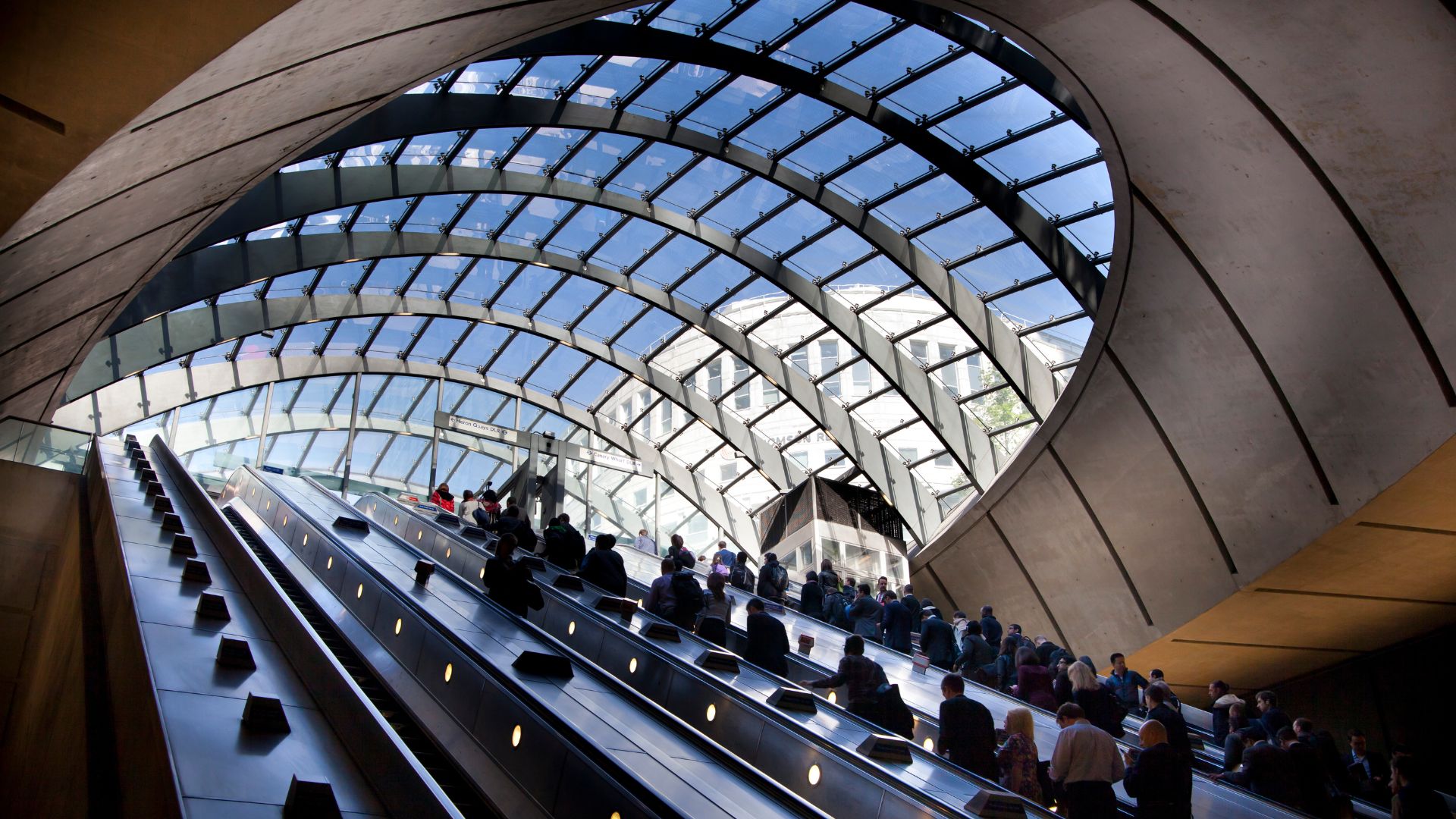Image above - London Underground (the Tube), Canary Wharf Station, the Docklands area
What are the benefits of integrated public transport?
Eric Peissel: There are a number of benefits for both the people who use integrated public transport and the city authorities that develop and operate these systems. Fundamentally, integrated public transport provides passengers with multimodal options to efficiently travel to their destinations. While travel may include more than one operator and mode, people experience their transport journey as a unified service that maximizes ease of travel.
Often, transport has been viewed from a single-mode perspective rather than from a whole-system point of view. A holistic approach will help planners and designers use resources better and develop systems that support mobility options to meet people's varying needs; it will also lead to benefits for transit agencies. For example, the rise of active transport in urban areas requires designing spaces to support walking and cycling. This development also provides a great opportunity to link pedestrian and cycling paths to rail and bus, which encourages more people to use public transport. These and other improvements such as accessibility are best considered through systems thinking. This approach is essential to advancing inclusive design and fostering dynamic urban environments where safe and convenient mobility for people are prioritized over private-vehicle use.
Another characteristic of integrated networks is the provision of information, pre-trip and while travelling, to help people make informed choices about modes and routes. Single-journey payment conveniently connects travellers to modes throughout the whole transport system. For the greatest number of people to experience the benefits of public transport, services need to be efficient, reliable and affordable with interconnected options to support inclusivity and flexibility in planning.
To understand the importance of modernizing mobility systems globally, it is helpful to recognize the increasing role of public transport in urban renewal and sustainable development; through public transport, neighbourhoods have been regenerated at the core of many brownfield sites in major cities. The Docklands in London is now a vibrant waterside area. Area regeneration began with light rail in the late 20th century, with subsequent rail extensions. The Docklands are now served by light rail, metro and regional express trains. In Canada, work is underway by Waterfront Toronto to create a new sustainable neighbourhood anchored by an urban environment with expansive green spaces and excellent active and public transport options.
Today, transport integration is well represented by the mobility hub concept, established in several European countries and gaining increased attention in North America. Mobility hubs1 offer access to public transport and shared micromobility options in one location. These hubs provide connectivity through a city while seamlessly linking to last-mile options, to fill the transport gap that exists for many people in urban environments.
What are the main barriers to achieving this integration and how can they be overcome?
Eric Peissel: While Mobility as a Service, or MaaS, promises to digitally bring together offerings of multiple mobility service providers, there are still substantial questions in many jurisdictions around funding mechanisms, physical infrastructure and data sharing, the latter two requiring systems integration to connect individual networks and corridors.
Often, funding is the single issue that results in barriers between modes, and this needs to be addressed at a metropolitan level. We have seen more and more regions looking to not only unify cost structures but also to remove historic barriers between modes. In North America, Montreal has simplified transit by adopting a simple three-zone network for the greater metropolitan region covering all public transport modes, including bus, on-demand, commuter rail and metro. Paris has also amplified the coverage of its monthly pass, allowing people to use their passes beyond Paris proper across the Île-de-France metropolitan region, significantly increasing opportunity to access more places through multiple modes. Sydney continues to develop its public transport system—including ferries, light rail transit, metros, regional trains and buses—with unified wayfinding and fare policies.













